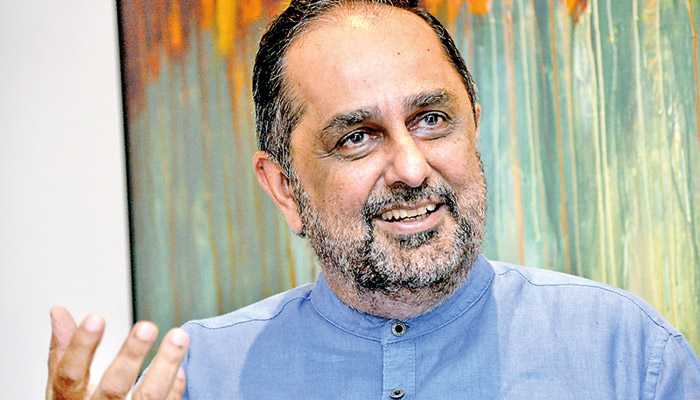As the one year anniversary of Israel’s attack on the Gaza Strip is marked, it is vital to re-examine Operation Cast Lead within the wider context of Israel’s approach to both Gaza and the Palestinians.
There is a danger that the scale of the devastation and the international protests which followed the war can deflect attention from the broader Israeli policies of collective punishment and deliberately-engineered socio-economic collapse.
The first important part of this context for both before – and since – Israel’s attack on the Gaza Strip is the crippling blockade.
The isolation of the Gaza Strip actually goes back to the early 1990s, when Israel first implemented the system of ‘closure’ and fenced off the territory. But Israel’s current tight control of the Gaza Strip dates back to the aftermath of the Palestinian Legislative Council elections in January 2006, and then Hamas’ armed defeat of Fatah in the summer of 2007.
Thus even before the widespread targeting of civilian infrastructure by the Israeli military a year ago, the Gaza Strip had been subjected to what the Goldstone report described as “a systematic policy of progressive isolation and deprivation”.
‘Economy dismantled’
Since 2007, aid as a proportion of all imports into the Gaza Strip has increased eightfold. Workforce unemployment stands at around 40 per cent, with only seven per cent of factories operational. The weekly average for truckloads of goods entering Gaza is a quarter of the quantity in the first half of 2007.
Months before Operation Cast Lead, an aid agency report described how the blockade “is destroying public service infrastructure in Gaza” and “has effectively dismantled the economy”.
Little wonder then that the World Health Organisation’s mission to Gaza reported in May this year that “since 2006, the health effects of the blockade have included stagnating life expectancy, worsening infant and child mortality, and childhood stunting”.
Israel has also maintained a tight control over Gaza’s air space and territorial waters, the population registry, and movement between Gaza and the West Bank.
Political strategy
The second crucial context for Operation Cast Lead is the overarching political strategy behind Israel’s collective punishment of Palestinians in Gaza. For the humanitarian catastrophe documented in numerous reports by the UN and NGOs is not, of course, a ‘natural disaster’ but a deliberate, political policy.
One of Israel’s main aims over the last few years has been to keep Hamas diplomatically and internationally isolated. Tzipi Livni, the then foreign minister, told a press conference a few days into Operation Cast Lead of how it was “important to keep Hamas from becoming a legitimate organisation” (a reason for Israel preferring not to extend a six-month truce).
Another key Israeli goal, evident in both the ongoing blockade as well as the brutal military assault of Operation Cast Lead, is to punish the civilian population in the hope of turning them against Hamas.
In early 2006, an advisor to Ehud Olmert, the then Israeli prime minister, said that “the idea is to put the Palestinians on a diet” in order to pressure the elected Hamas-majority government.
In September 2007, Israeli newspaper Ha’aretz reported on the Israeli military’s plans “to limit services to the civilian population in Gaza” in order “to compromise the ability of Hamas to govern”.
It was this logic that shaped Israel’s military operations which, in the words of the UN’s Goldstone report, were “directed by Israel at the people of Gaza as a whole, in furtherance of an overall policy aimed at punishing the Gaza population”.
‘De-developing’ Gaza
That this was a “carefully planned” assault intended “to punish, humiliate and terrorise a civilian population” was clear at the time.
The Jerusalem Post reported Shimon Peres, the Israeli president, as saying that Israel’s aim was to “to provide a strong blow to the people of Gaza so that they would lose their appetite for shooting at Israel”.
As hundreds of Palestinians were being killed, The Washington Post related how the “hope” of Israeli officials was that “Gazans become disgusted with Hamas and drive the group from power”.
An Israeli ex-national security adviser told The New York Times that “the terrible devastation” caused by going beyond just “military targets” would lead to “a lot of political pressure” on Hamas.
Targeting civilians to advance a political goal is a standard definition of terrorism: in the words of the US state department, “premeditated, politically motivated violence perpetrated against noncombatant targets”. US federal law describes terrorism as violence or “life-threatening acts” apparently intended “to intimidate or coerce a civilian population”.
A final part of Israel’s political strategy for the Gaza Strip is to turn the territory into a depoliticised humanitarian crisis, its population rendered utterly dependent on international aid. This is the strategy of ‘de-development’ that has been going on for decades and which is now intensified and more brutal.
Zionism’s contemporary dilemma
But the third and final context for recalling the events of a year ago means looking beyond just Gaza to take in Israel’s policies toward the Palestinians as a whole.
Israel’s regime of control over the Palestinians, both those in the Occupied Territories as well as those with citizenship in the pre-1967 borders, is a response to political Zionism’s historic and contemporary dilemma: how to create and maintain a Jewish state in a land with a non-Jewish population.
In 1948 and 1967, Israel was able to carry out the mass expulsion of Palestinians. Since then, however, Israel’s policies toward the Palestinians, aimed at maintaining the domination of one group over another, have been guided by two, parallel principles: maximum land with the minimum number of Arabs, and, the maximum number of Arabs on the minimum amount of land.
That is how the blockade of Gaza and Operation Cast Lead fit in with the eviction of Palestinians in East Jerusalem, the consolidation of the settlement blocs in the West Bank, and Israeli state policy toward the Negev and Galilee.
Slowly, Palestinians are being forced out, whether through house demolitions, the removal of residency permits, or the creation of conditions which make the continuation of normal life impossible.
There is no ‘solution’ to Gaza outside of a just peace for Palestinians and Jewish Israelis that can only emerge when the Palestinian people’s rights under international law are realised, and Israel’s policies of dispossession, separation, and structural discrimination are seriously challenged.
Post Disclaimer | Support Us
Support Us
The sailanmuslim.com web site entirely supported by individual donors and well wishers. If you regularly visit this site and wish to show your appreciation, or if you wish to see further development of sailanmuslim.com, please donate us
IMPORTANT : All content hosted on sailanmuslim.com is solely for non-commercial purposes and with the permission of original copyright holders. Any other use of the hosted content, such as for financial gain, requires express approval from the copyright owners.
 Sri lanka Muslims Web Portal Sri Lanka Muslims News Center
Sri lanka Muslims Web Portal Sri Lanka Muslims News Center



